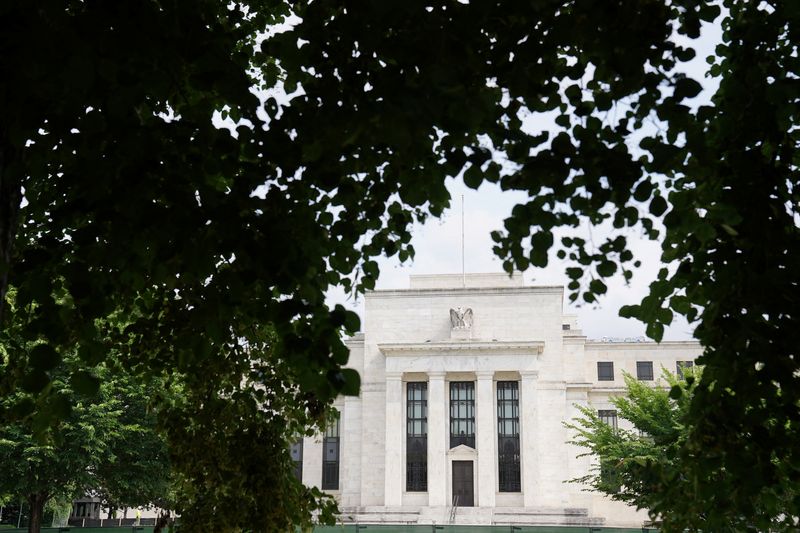(Bloomberg) -- Federal Reserve officials are on track to consider pausing interest rate hikes following their March meeting if more evidence of cooling inflation rolls in.
That’s based on a timeline sketched out by one of the Fed’s most closely watched hawks, Governor Christopher Waller, who was an early advocate of the Fed’s front-loading rate-hike strategy last year.
Policymakers are widely expected to raise rates by a quarter percentage point at the conclusion of a two-day gathering Wednesday, to a range of 4.5% to 4.75%, slowing from December’s 50-basis-point increase after four straight 75-basis-point moves.
Fed officials projected in December that they would pause when rates move above 5%, but Wall Street traders bet they will halt slightly below that level.
US central bankers have said that October, November and December inflation data, which all showed steady declines in price increases, was welcome news but they still need to see more.
Waller, in recent comments, spelled out how much more evidence he needed to call a halt.
“The argument is just whether you should pause after three months of data or pause after six months of data,” Waller said on Jan. 20. “From the risk management side — I need six months of data, not just three.”
The core personal consumption expenditures index rose 2.2% in the three months through December on an annualized basis, and 3.7% over the past six months, a slowdown from its 4.4% pace in the last 12 months, a report Friday showed.
Vice Chair Lael Brainard, speaking a day before Waller, also pointed to declines in three- and six-month measures of inflation.
Should these trends continue for three more months, per Waller’s benchmark, policymakers could have seen enough to be confident of pausing by their May 2-3 meeting, when they will have data for January, February and March in hand.
“The messaging shifts — before it was you’ve got to get moving quickly and hunker down because we’re going to be jacking rates,” said Brett Ryan, a senior US economist at Deutsche Bank. “Now it’s not about the pace, it’s about the end point and we have to feel our way around where the end point is.”
Mindful of how they got head-faked in 2021 when prices cooled and then heated back up, officials have stressed the need to see a few more months of similar soft readings to convince them the gauges are on a meaningful decline back to their 2% target.
Waller pointed to encouraging trends in wage numbers that show a deceleration over the past few months. But he noted that some monthly measures of inflation are largely unchanged from where they were at the start of 2022.
He was among officials who explicitly said they were ok with slowing to 25 basis points this week while continuing to tighten.
The change in tone and appearance of consensus about slowing the pace of rate increases as they coast to a halt was eye-catching.
“December was still early enough that they were trying to be very grumpy and resistant to any kind of optimism that they might be able to pause,” said Julia Coronado, president of MacroPolicy Perspectives in Austin, Texas.
“But now it’s kind of noteworthy that coming into this meeting both the more dovish members and the not dovish members are comfortable with 25,” she said.
Shifting to a slower pace of increases allows policymakers to transition policy into a risk-management mode in which they keep putting pressure on demand while reducing the risk of overtightening.
“In this environment, I believe we need a strategy that is both flexible and robust,” Lorie Logan, president of the Dallas Fed, said earlier this month. “We need to continually and carefully assess what the incoming data imply about the economic outlook and adjust course accordingly.”
©2023 Bloomberg L.P.
